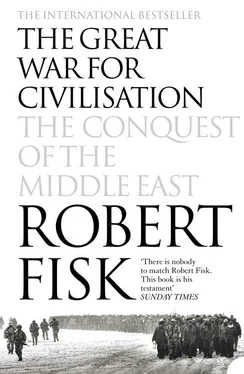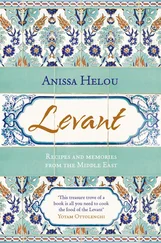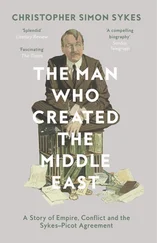You could understand how Khomeini’s followers were persuaded by his sanctity into an almost crude obeisance. I remember the way Qotbzadeh talked to me about him, his voice softening into an almost feminine purr as he tried to convince me that the Ayatollah’s annoyance at the slow pace of the revolution did not imply any change of character. ‘The man is as holy as he was, as honest as he has ever been, as determined as he always was, and as pure as he has ever been.’ This was the man whose execution Khomeini would approve. What Qotbzadeh thought in front of the firing squad we shall never know.
‘So, back to the “den of iniquity”, eh, Bob?’ Harvey had asked when I came panting into the Reuters office to file. The cigarette smoke was thicker than usual. There was another whisky bottle on the desk. ‘What’s it like to be back in the “centre of vice and Saturnalia”?’ Harvey was right, of course. ‘Saturnalia’ really was one of Khomeini’s favourite expressions. And it was easy to mock the Iranian revolution, its eternal sermonising, the endless, unalterable integrity of its quarrel, its childlike self-confidence. Yet there was a perseverance about this revolution, an assiduousness that could be used to extraordinary effect once a target had been clearly identified. Nothing could have symbolised this dedication more than the reconstitution of the thousands of shredded US diplomatic papers which the Iranians found when they sacked the American embassy.
A woman ‘follower of the Imam’ was later to describe how an engineering student called Javad concluded that the shreds of each document must have fallen close together, and could thus be restored in their original form:
He was a study in concentration:bearded, thin, nervous and intense. These qualities, combined with his strong command of English, his mathematical mind and his enthusiasm, made him a natural for the job … One afternoon he took a handful of shreds from the barrel, laid them on a sheet of white paper and began grouping them on the basis of their qualities … After five hours we had only been able to reconstruct 20–30 per cent of the two documents. The next day I visited the document centre with a group of sisters. ‘Come and see. With God’s help, with faith and a bit of effort we can accomplish the impossible,’ he said, with a smile.
A team of twenty students was gathered to work on the papers. A flat board was fitted with elastic bands to hold the shreds in place. They could reconstruct five to ten documents a week. They were the carpet-weavers, carefully, almost lovingly re-threading their tapestry. Iranian carpets are filled with flowers and birds, the recreation of a garden in the desert; they are intended to give life amid sand and heat, to create eternal meadows amid a wasteland. The Iranians who worked for months on those shredded papers were creating their own unique carpet, one that exposed the past and was transformed into a living history book amid the arid propaganda of the revolution. High-school students and disabled war veterans were enlisted to work on this carpet of papers. It would take them six years to complete, three thousand pages containing 2,300 documents, all eventually contained in 85 volumes. *
Night after night, as each edition was published, I pored over these remarkable documents, a living archive of secret contemporary history from 1972 to the chaos of post-revolutionary Iran by the nation that was now threatening military action against Iran. Here was Ambassador William Sullivan in September 1978, contemptuously referring to ‘the extremist coalition of fanatic Moslems led by Ayatollah Khomeini in Iraq (which has reportedly been penetrated and is assisted by a variety of terrorist, crypto-communist, and other far left elements)…’ or listening to the Shah as he ‘persists in saying that he sees the Soviet hand in all the demonstrations and disturbances that have taken place’. Some of the diplomatic analyses were just plain wrong. ‘Such figures as Ayatollahs Khomeini and Shariatmadari … have little chance of capitalizing on their wide following to win control of the government for themselves,’ one secret cable confides.
Other documents were deeply incriminating. Robert R. Bowie, deputy director for national foreign assessment at the CIA, thanks Sullivan on 14 December 1978 for hosting a cocktail party that enabled him to meet the Shah and ‘to have some less formal conversations with several Iranian military and SAVAK people’. A memorandum of the same date from the US consulate in Isfahan records a conversation with Ibrahim Peshavar, the local director of Iranian television, in which Peshavar is asked ‘if it was true that his teams had covered demonstration [sic] toppling the Shah’s statues, and had provided it to security forces for investigation. He said that it was covered, that NIRT [National Iranian Radio and Television] had decided not to run it on television, and that such films are routinely shared with “other government agencies”. He … asked that I not spread the word.’
Among the reconstituted files was a 47-page CIA booklet marked ‘Secret’ and dated March 1979 – written after the revolution but still, incredibly, kept in the embassy archives – on the internal structure of Israel’s ‘Foreign Intelligence and Security Services’. Israeli efforts to break the Arab ‘ring’ encircling Israel, it said, had led to:
a formal trilateral liaison called the Trident organisation … established by Mossad with Turkey’s National Security Service (TNSS) and Iran’s National Organisation for Intelligence and Security (Savak)… The Trident organisation involves continuing intelligence exchange plus semmiannual [sic] meetings at the chief of staff level … The main purpose of the Israeli relationship with Iran was the development of a pro-Israel and anti-Arab policy on the part of Iranian officials. Mossad has engaged in joint operations with Savak over the years since the late 1950s. Mossad aided Savak activities and supported the Kurds in Iraq. The Israelis also regularly transmitted to the Iranians intelligence reports on Egypt’s activities in the Arab countries, trends and developments in Iraq, and communist activities affecting Iran.
Some of the internal American memoranda showed a considerable grasp of political events and an understanding of Iran’s culture – even if this wisdom was not acceptable back in Washington. George Lambrakis sent a memo to the State Department on 2 February 1979, pointing out that:
Iranian govt spokesmen have for a long time peddled the charge that Khomeini’s followers are for the most part crypto communists or leftists of Marxist stripe … to a considerable extent it is based on a fable that communists have been infiltrated as youths into the religious schools and now constitute the mullahs and other organizers of the religious movement …
Westernization in Iran achieved a status and legitimacy under the two Pahlavi monarchs which has practically wiped out memories of the Islamic past for large numbers of people who went to school in the westernized Iranian school system and did their higher studies for the most part abroad … the Pahlavi Shahs have sought to brand the Islamic establishment as an ignorant reactionary remnant of the past which is fast becoming obsolete. Steps were taken to render this a self-fulfilling prophecy. The govt has made efforts to cut off the mullahs from direct financial support by the people … Nevertheless it has become obvious that Islam is deeply embedded in the lives of the vast majority of the Iranian people. In its Shiite format it has over the years become strongly identified with Iranian nationalism … The Pahlavis attempted to supplant this ancient nationalism with a modern version based on a return to traditions, legends and glories of the pre-Islamic past …
Читать дальше












